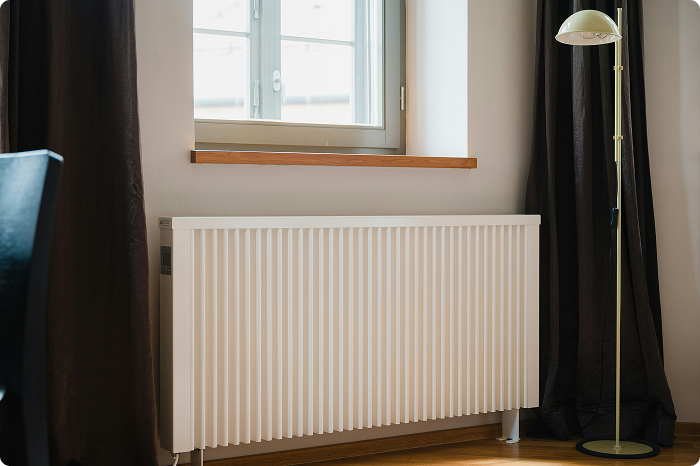Troubleshooting and Fixing a Furnace Leaking Water
By Jennifer Barnett · Jul 25, 2025

A leaking furnace is one of those home maintenance issues that can cause significant concern. Water leaks, if not addressed promptly, can lead to bigger problems like mold growth, structural damage, and even compromised efficiency of your heating system. In this comprehensive guide, we'll dive into why your furnace might be leaking water, how to troubleshoot the issue, and what steps you can take to resolve it. Whether you're a DIY enthusiast or prefer calling in professionals, we've got you covered.
Common Causes of Water Leaks in Furnaces
Understanding the root cause of your furnace leaking water is the first step in fixing the problem. Here are some common reasons:
1. Condensation Leak
In high-efficiency furnaces, condensation is a part of the heating process. These furnaces should have a drainage system to expel the water generated during condensation. If this system gets clogged or damaged, water can pool around the furnace and create leaks.
2. Malfunctioning Humidifier
Many modern furnaces come with built-in humidifiers. If the humidifier hose or unit develops a leak, it can often resemble a furnace leak because the water pools in the same area.
3. Plumbing Issues
A furnace leak might not always originate from the furnace itself. Leaks from nearby plumbing systems can trickle down and create the illusion of a furnace leak. Check the vicinity for dripping pipes or other water sources.
4. Blocked Drain Line
Furnace drain lines can become clogged with debris over time. Blocked lines will prevent water from draining properly, causing it to back up and leak around the furnace.
Diagnosing the Issue
Safety First
Before you start diagnosing any issues, always ensure that your furnace is turned off to prevent any electrical hazards. Disconnect the power source and shut off the gas valve.
Step-by-Step Diagnosis
-
Inspect the Condensate Drain: Check the condensate drain line for blockages. If you find debris, clean the line using a wet/dry vacuum to clear any clogs.
-
Examine the Humidifier: Look for signs of water around the humidifier unit. Inspect the water lines for any leaks or cracks.
-
Check Nearby Plumbing: Ensure there aren't any leaks from pipes or other water systems near your furnace.
-
Inspect the Furnace Filter: A dirty air filter can cause your furnace to overheat and potentially create water condensation. Replace the filter if it's dirty.
Fixing the Problem
Once you've diagnosed the issue, here are some DIY steps to fix your leaking furnace:
Clearing a Blocked Condensate Drain Line
- Turn Off the Furnace: Ensure the furnace is switched off.
- Locate the Drain Line: Usually, it's a white PVC pipe connected to the furnace.
- Remove Clogs: Use a wet/dry vacuum to suck out any blockages. Alternatively, you can use a plumber's snake for persistent clogs.
- Flush the Line: Pour a mixture of water and vinegar down the line to clear out any remaining debris and sanitize the line.
Repairing or Replacing the Humidifier
- Turn Off Water Supply: Locate and turn off the water supply to the humidifier.
- Examine Humidifier Component: Check for cracks or loose connections. Tighten any loose fittings.
- Replace Damaged Parts: If you find any damaged hoses or parts, you might need to replace them. Refer to your furnace manual for specific part numbers and replacement instructions.
Professional Help
If the problem persists, it might be time to call in a professional. Complex issues like a faulty heat exchanger or significant water damage are best handled by certified HVAC professionals.
You can find reliable professionals through Houztask.com.
Preventative Measures
To avoid future leaks, consider these preventive maintenance tips:
- Regularly Change Filters: Replace your furnace filter every 1-3 months to ensure efficient operation.
- Inspect and Clean Drain Lines: Make it a habit to check your condensate drain lines for clogs and clean them out regularly.
- Schedule Professional Maintenance: Annual maintenance checks by a professional can prevent many issues before they start.
Conclusion
Water leaks in your furnace can be a daunting problem but with the right approach, most issues can be resolved quickly and efficiently. Regular maintenance and timely checks can go a long way in ensuring the longevity and performance of your furnace. If you're ever in doubt, don't hesitate to ask for professional help.
For any more questions or to find local professionals to help with your furnace, visit Houztask AI or Find a pro.
Need help?
Let HouzTask help you diagnose the issue or connect with a trusted local pro — in minutes.
Get Started with HouzTask